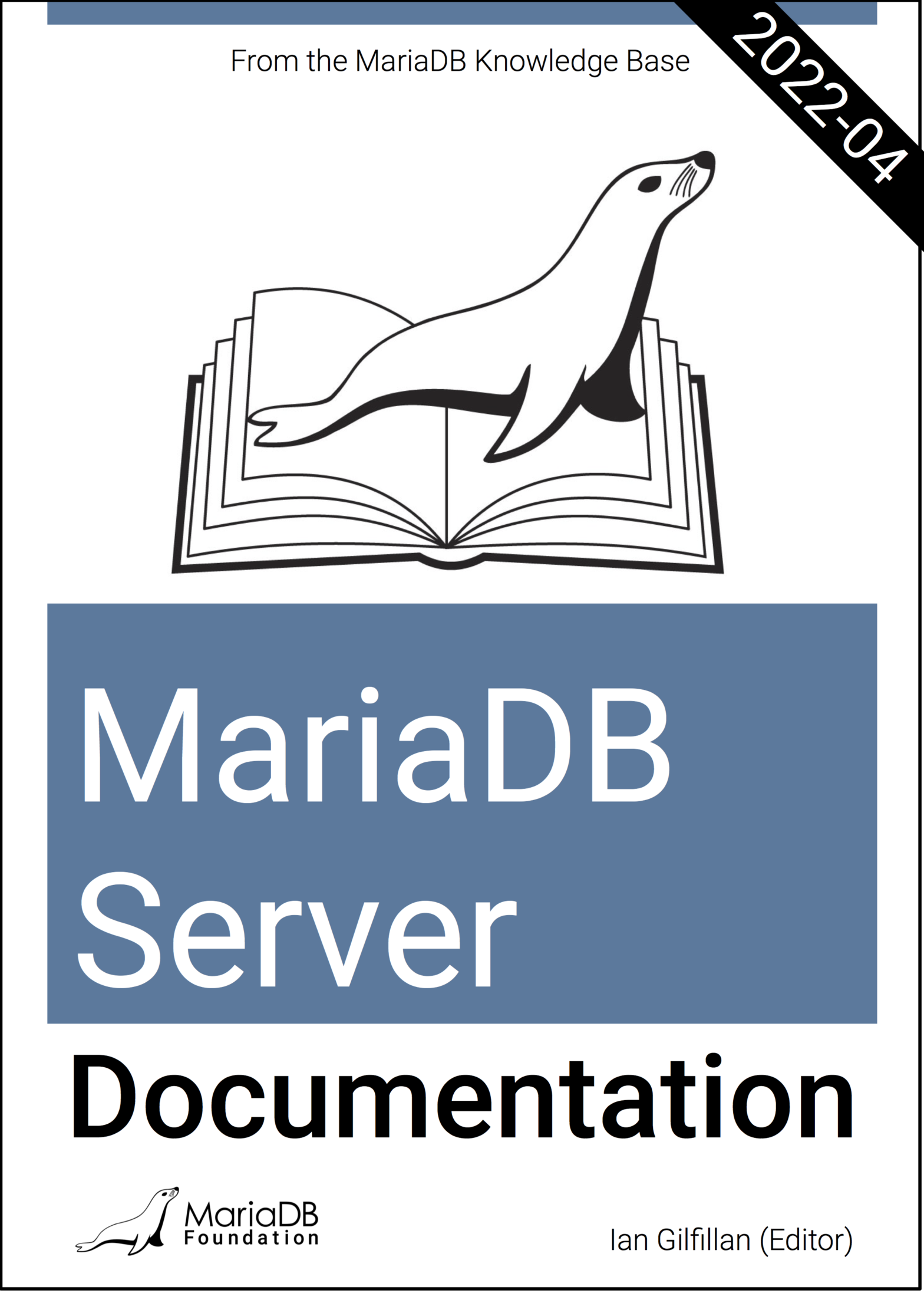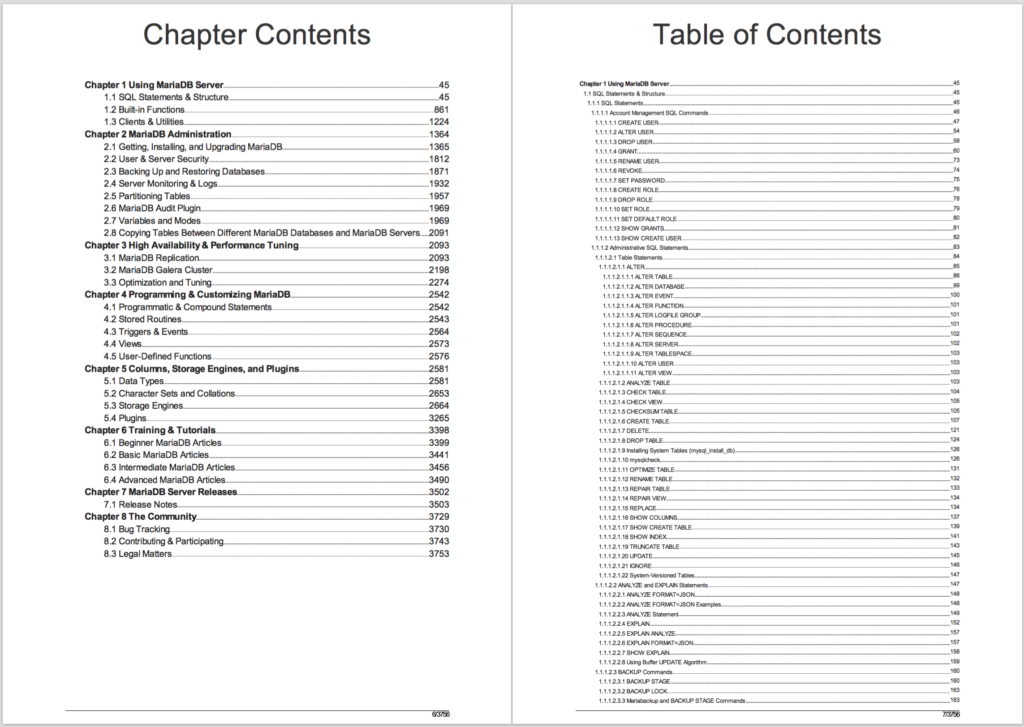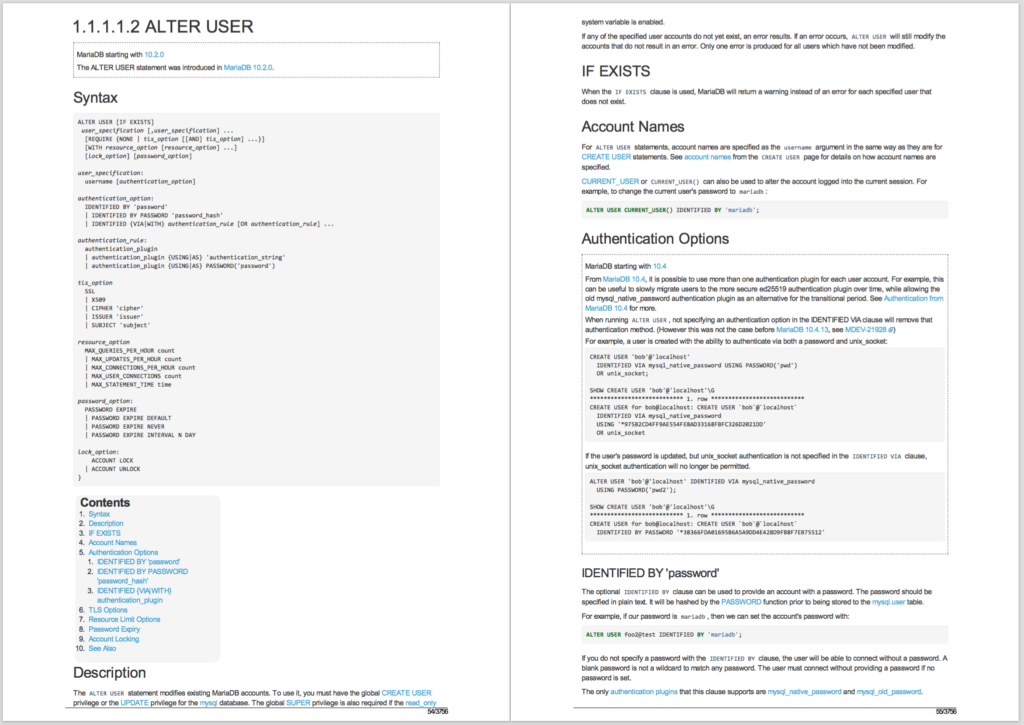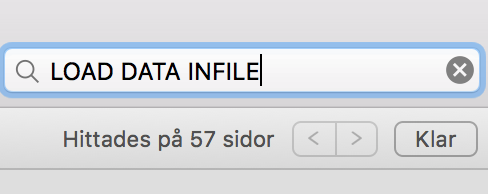MariaDB Server Documentation as PDF

MariaDB Server Documentation is now released as a single PDF file, browsable offline. Download the over 3000 pages and check it out!
Better late than never
Some things take long! In 2014, there was a request on Jira for delivering the MariaDB Server Knowledgebase in one PDF file. That’s over seven years ago. MDEV-6881, you see it in the number already – we are now at well beyond MDEV-28000.
The request has always been in the back of our heads. What triggered it now was playing around with Python and the relative ease of transforming one format to another, including PDF.

The use cases
No, we don’t expect you to print it out. But we do expect that you will find benefits in having one single PDF file that contains all documentation on MariaDB Server.
- You can use it offline. When connectivity is bad. Or when you intentionally have turned off the Internet, to be able to work productively.
- You can use it to get an overview. Chances are you are using only a subset of the features that you would benefit from. Read the table of contents, and you’ll already get a picture of what you’re missing out on.
- You can use it as a “productive pastime”. Stuck waiting somewhere, with only your phone or tablet? Learn a couple of new MariaDB features, instead of doom scrolling or building your envy on Instagram.
We are sure there are other reasons to use the PDF. You tell us when it makes sense!

Getting started
We have a couple of suggestions.
- Download it, from mariadb.org/mariadbserverpdf/.
- Save it on your laptop, where you’ll find it. I have it in the directory Documents/mariadb/manual/.
- Save it on your phone. I use the native Books app on my kajPhone.
- Read the one-page TOC currently on page 6. It shows you the structure of the book.
- Read the preface on pages 3-5. It tells you about the book’s “prehistory”, structure, and format. It describes the current first edition. It tells you how to give us feedback about the manual; we expect to make new editions on a near-monthly basis this year. And it contains the acknowledgements, where we thank those that made the book possible.
- Read the full 38 page TOC, starting on page 7. Yes, it will take quite a while to read it, but when you’re through with it, you’ll probably already have a good picture of what you have been missing out on and what you previously unknown to you features you might want to try out.
- Go on, start using it, not forgetting the search capabilities.
- Regularly, come back for more. We continuously update the Knowledge Base, and regularly build new PDF versions. Don’t sit on an old one unintentionally.

Give us feedback
We would like to pick the brains of individual users. At conferences, asking open-ended questions is easy and feels productive for both parties, when meeting in the corridors between talks.
Replicating the same productive discussion on-line is much harder. It takes effort from both parties. It feels like work.
We are still looking for the best way for you to give us meaningful feedback. Feel free to approach us over Zulip (https://mariadb.zulipchat.com/ – the Documentation topic). Also email to foundation@mariadb.org will find its way to us.
When you find individual bugs, please enter them into Jira using the guidelines mentioned in the KB article https://mariadb.com/kb/en/reporting-documentation-bugs/.

Thank you
There are so many people to thank for this book. Let me thank only two of them here in the blog – Ian Gilfillan as the Editor, and his son Dorje Gilfillan as the developer who created the PDF based on the Knowledge Base. The long list of other people that have made the book possible are listed in the Preface of the book. I think you will make all of them glad by downloading the book and trying it out!
Way to go Dorje 🙂 It’s definitely not trivial to convert HTML to PDF.
Thank you Kaj Arnö,
I was searching for a long time for this! Thank you.